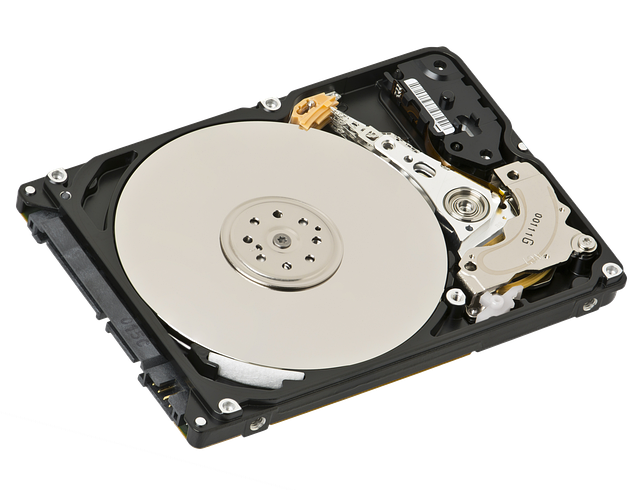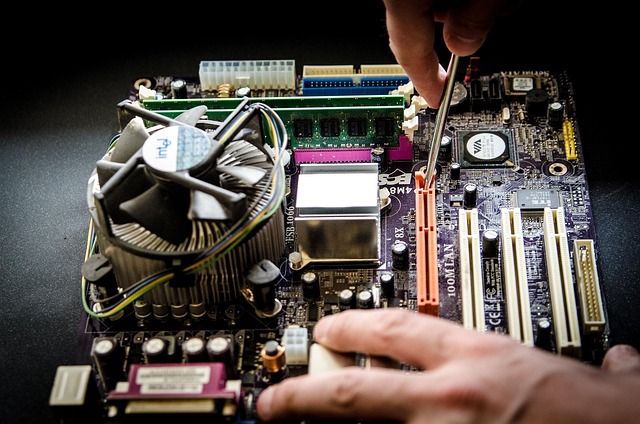Crypto Wallets in 2025: The Future of Digital Asset Management
Author: Jameson Richman Expert
Published On: 2025-04-26
Prepared by Jameson Richman and our team of experts with over a decade of experience in cryptocurrency and digital asset analysis. Learn more about us.
As we delve deeper into the ever-evolving world of cryptocurrency, understanding the trajectory of crypto wallets by 2025 becomes increasingly vital. With rapid advancements in technology and the growing mainstream adoption of digital currencies, the significance of secure, efficient, and user-friendly wallets cannot be overstated. This comprehensive guide will explore the anticipated landscape of crypto wallets, highlighting emerging trends, innovative features, and their pivotal role in facilitating seamless transactions in an increasingly decentralized financial ecosystem.
Crypto wallets act as the fundamental tool for managing digital assets. They securely store public and private keys, allowing users to interact with various blockchain networks for sending, receiving, and tracking their cryptocurrency holdings. As the crypto market continues to mature, the demand for advanced wallet solutions is expected to skyrocket. By 2025, we predict a significant shift towards wallets that offer enhanced security features, improved user interfaces, and seamless integration with decentralized finance (DeFi) platforms, making them indispensable for both casual users and seasoned investors.

Trends Shaping the Future of Crypto Wallets
The landscape of crypto wallets in 2025 will be influenced by several key trends:
- Multi-Currency Support: With the proliferation of cryptocurrencies, wallets will increasingly need to support a broad range of digital assets. This functionality will enable users to manage their entire portfolio from a single interface, catering to investors seeking diversification across multiple tokens and chains. Furthermore, wallets will likely incorporate features to automatically convert between currencies at competitive rates, enhancing user flexibility. Advanced analytics tools providing insights into portfolio performance across different market conditions will empower users to make data-driven decisions. Integrating artificial intelligence (AI) for predictive analysis could further empower users, providing forecasts based on market trends and historical data.
- Enhanced Security Measures: As cyber threats escalate, wallets will integrate advanced security features like biometric authentication, multi-signature support, and hardware wallet compatibility. These enhancements will safeguard users from unauthorized access, ensuring that digital assets remain secure against potential breaches. AI-driven fraud detection systems will likely become commonplace, identifying suspicious activity and alerting users in real-time. Additionally, wallet providers may offer insurance coverage to protect against potential losses due to hacking or system failures, providing extra peace of mind. Enhanced encryption methods and decentralized identity protocols may also emerge as standard practices, further securing user data.
- Integration with DeFi: The surge in decentralized finance will drive wallets to provide seamless access to DeFi platforms, allowing users to lend, borrow, and earn interest on their assets directly from their wallets. This integration will empower users to explore a myriad of financial opportunities, fundamentally changing their interactions with money. Wallets may also offer automated yield farming strategies, making DeFi more accessible to average users. As DeFi protocols continue to evolve, wallets will need to stay updated to ensure compatibility and optimal user experiences. The rise of liquidity pools and decentralized exchanges will further necessitate that wallets support complex transactions and facilitate interoperability across various DeFi platforms.
- User-Friendly Interfaces: With the influx of new users into the crypto space, wallet developers will prioritize creating intuitive interfaces that appeal to both novice and experienced users. Enhancements will include simplified navigation, educational resources, and responsive customer support systems to facilitate a smoother user experience. Gamification elements may be introduced to make the learning process more engaging. Interactive tutorials and step-by-step guides could become standard features to help users navigate complex functionalities. The use of chatbots and AI-driven customer service solutions could also improve user engagement and support.
- Cross-Platform Accessibility: In 2025, we expect crypto wallets to be accessible across multiple platforms, including mobile, desktop, and even wearables. This will ensure users can manage their assets anytime and anywhere, increasing engagement and convenience. The ability to sync across devices seamlessly will become a standard expectation. The introduction of browser extensions and integration with popular e-commerce platforms may enhance the usability of wallets in everyday transactions, making crypto payments more mainstream. Enhanced compatibility with Internet of Things (IoT) devices could also facilitate a more integrated financial ecosystem.
Types of Crypto Wallets
As we approach 2025, various types of crypto wallets will coexist, each catering to distinct user needs and preferences:
1. Hardware Wallets
Hardware wallets are physical devices that securely store a user's private keys offline, making them one of the safest options for cryptocurrency storage. They are immune to online hacking attempts. As these wallets evolve, we can expect them to support a wider array of cryptocurrencies, enhanced security protocols, and possibly biometric authentication to bolster security. Leading examples include Ledger and Trezor, known for their robust security features and user-friendly designs. Future iterations may also incorporate features like secure recovery options, allowing users to retrieve their assets without compromising security. Additionally, hardware wallets may introduce functionalities such as built-in trading capabilities and compatibility with emerging blockchain technologies, including NFTs (Non-Fungible Tokens) and cross-chain transactions.
2. Software Wallets
Software wallets, available as desktop, mobile, or web-based applications, provide users with convenient access to their funds. By 2025, we anticipate these wallets will become increasingly sophisticated, incorporating features like integrated trading platforms, portfolio management tools, and automated alerts for price fluctuations or significant market events. These innovations will empower users to manage their investments more effectively and respond swiftly to market changes. Additionally, social trading features might enable users to follow and replicate the strategies of successful traders directly within their wallets. Enhanced privacy features, such as anonymous transactions and encrypted communication, may also be integrated to protect user data, ensuring compliance with global data protection regulations.
3. Custodial Wallets
Custodial wallets are managed by third-party services that hold users' private keys, offering convenience but often sacrificing some security. By 2025, custodial wallets are likely to implement more stringent security measures, such as insurance against hacking losses, two-factor authentication, and improved user education on safe practices to protect their assets. This will help users feel more secure while leveraging the convenience of custodial services. Moreover, regulatory compliance may also become a critical aspect, ensuring that custodians adhere to standards that protect user funds. Enhanced transparency and reporting features will likely be introduced, allowing users to track their assets and transactions more effectively, contributing to greater trust in custodial solutions. Additionally, custodial wallets may provide unique features like tax reporting tools and integrated fiat-to-crypto onramps.
4. Decentralized Wallets
Decentralized wallets empower users by allowing them to maintain control over their private keys and funds, aligning with the core principles of cryptocurrency. These wallets are expected to gain traction as users seek greater autonomy and security. Features such as self-custody options, integration with decentralized applications (dApps), and advanced privacy features will further enhance their appeal in the growing decentralized ecosystem. Furthermore, decentralized wallets may facilitate direct peer-to-peer transactions, eliminating the need for intermediaries and potentially reducing fees. As the ecosystem matures, interoperability between different blockchain networks may also become a defining feature of decentralized wallets, allowing users to engage with multiple assets and services effortlessly. The rise of decentralized autonomous organizations (DAOs) could also encourage collaborative governance within decentralized wallet platforms.
Best Crypto Wallets to Consider in 2025
As we look ahead, several wallets are well-positioned to lead the market in 2025:
- Binance Wallet: A prominent player in the cryptocurrency exchange space, Binance's wallet integrates seamlessly with its trading platform, offering users easy access to trading, staking, and various investment tools. You can start with Binance by registering here.
- MEXC Wallet: MEXC provides a robust wallet solution that supports a wide array of cryptocurrencies and offers access to various DeFi services, catering to both casual users and serious investors. Register to explore its features here.
- Bitget Wallet: Known for its user-friendly interface and advanced trading features, Bitget is making significant strides in the crypto wallet space, appealing to traders and investors alike. You can explore Bitget by signing up here.
- Bybit Wallet: Bybit's wallet is tailored for traders seeking easy access to derivatives and margin trading features. Sign up for Bybit to take full advantage of its offerings here.

The Importance of Security in Crypto Wallets
As the value of cryptocurrencies continues to escalate, so too does the threat of hacking and fraud. Ensuring the security of digital assets is paramount. By 2025, wallet providers must prioritize the following security measures:
- Two-Factor Authentication (2FA): Implementing 2FA adds an essential layer of security, requiring users to verify their identity before accessing their wallets. This could include SMS verification, email confirmation, or authenticator apps to enhance security protocols. The trend may also extend to multi-factor authentication, integrating biometric data such as fingerprint or facial recognition for added protection.
- Regular Software Updates: Keeping wallet software updated is crucial to protect against vulnerabilities. Wallet providers must commit to regular updates to safeguard user funds, addressing any potential security flaws promptly and effectively. Transparency in the update process will help build trust among users, ensuring they are aware of any improvements or fixes. Additionally, automated update systems may be developed to ensure users receive the latest security patches without needing manual intervention.
- Education and Awareness: Users should be educated on best practices for securing their wallets, including recognizing phishing attempts, employing strong passwords, and understanding the critical importance of backing up their recovery phrases. Increased user awareness will mitigate risks significantly. Wallet providers could also consider offering webinars or interactive tutorials to enhance user understanding, as well as providing regular newsletters with security updates and tips.
- Cold Storage Solutions: Wallet providers should offer cold storage options for storing large amounts of cryptocurrency, keeping them offline and out of reach from online threats. This is particularly important for institutional investors managing significant assets. Enhanced security measures for cold storage, such as physical access controls and advanced encryption, may become standard practices. Furthermore, advancements in hardware design could lead to more portable cold storage solutions that maintain high security without compromising user accessibility.
- Insurance Policies: As the crypto space matures, wallet providers may introduce insurance policies that protect users' funds against theft or loss, providing an added layer of security and peace of mind. Insurance coverage could extend to cover various risks, from hacks to smart contract failures, catering to a broader range of user concerns. Additionally, partnerships with insurance companies specializing in blockchain technology may emerge, enabling users to easily obtain coverage tailored to their specific needs.
Conclusion
As we approach 2025, the landscape of crypto wallets is set to undergo significant transformations. With advancements in technology, a growing number of users entering the space, and an increasing demand for security, the future of crypto wallets appears promising. By understanding the trends, types, and security measures associated with these wallets, users can make informed decisions that not only protect their investments but also enhance their overall crypto experience.
For further insights into the future of crypto wallets, check out this article. Additionally, if you're interested in maximizing your crypto profits, consider reading this guide on Binance trading bots, or explore how AI money bots can enhance your trading strategies in this article. Finally, delve into the secrets of automated crypto trading with this resource.